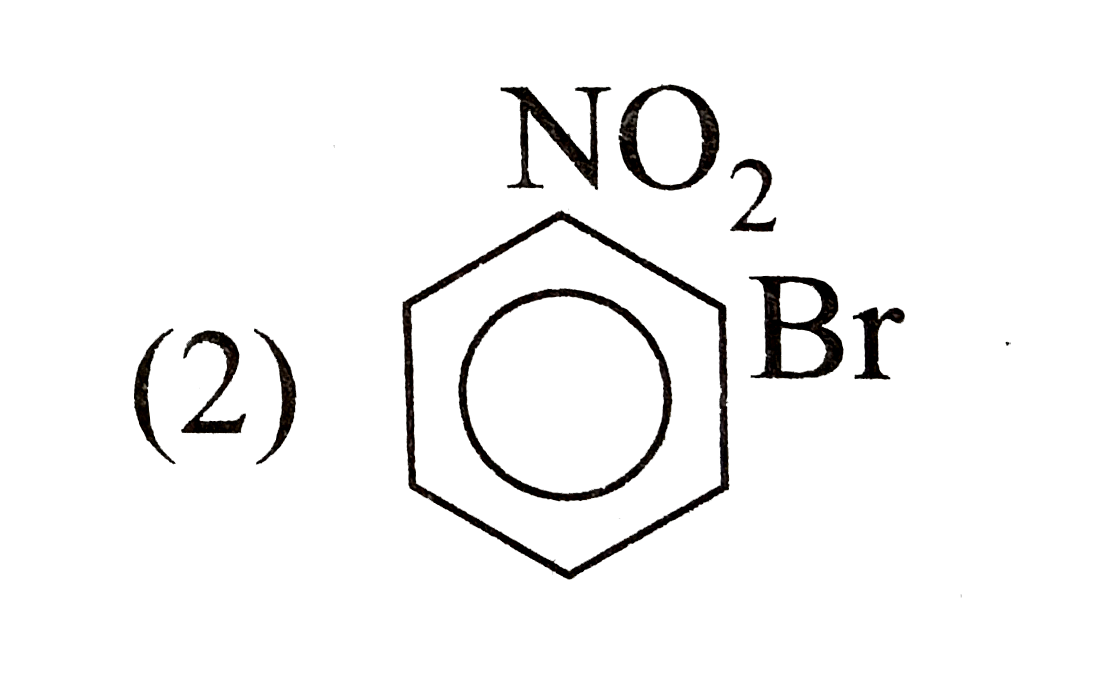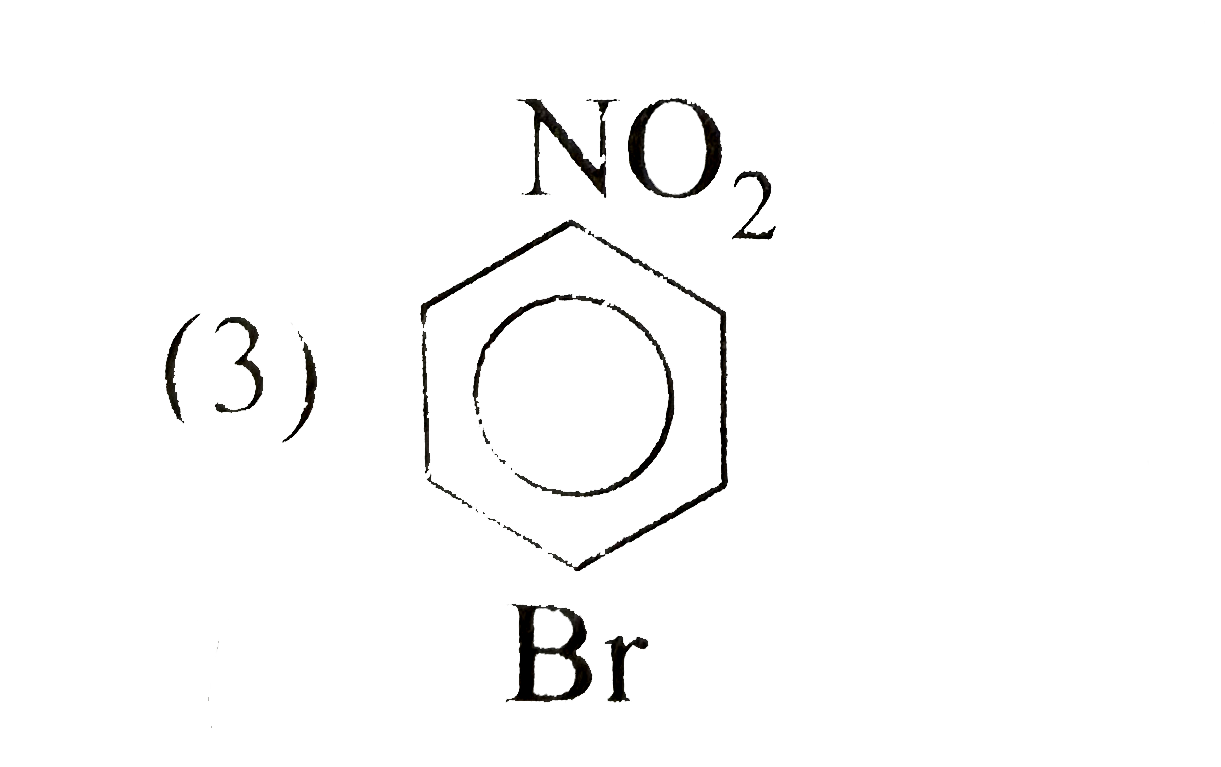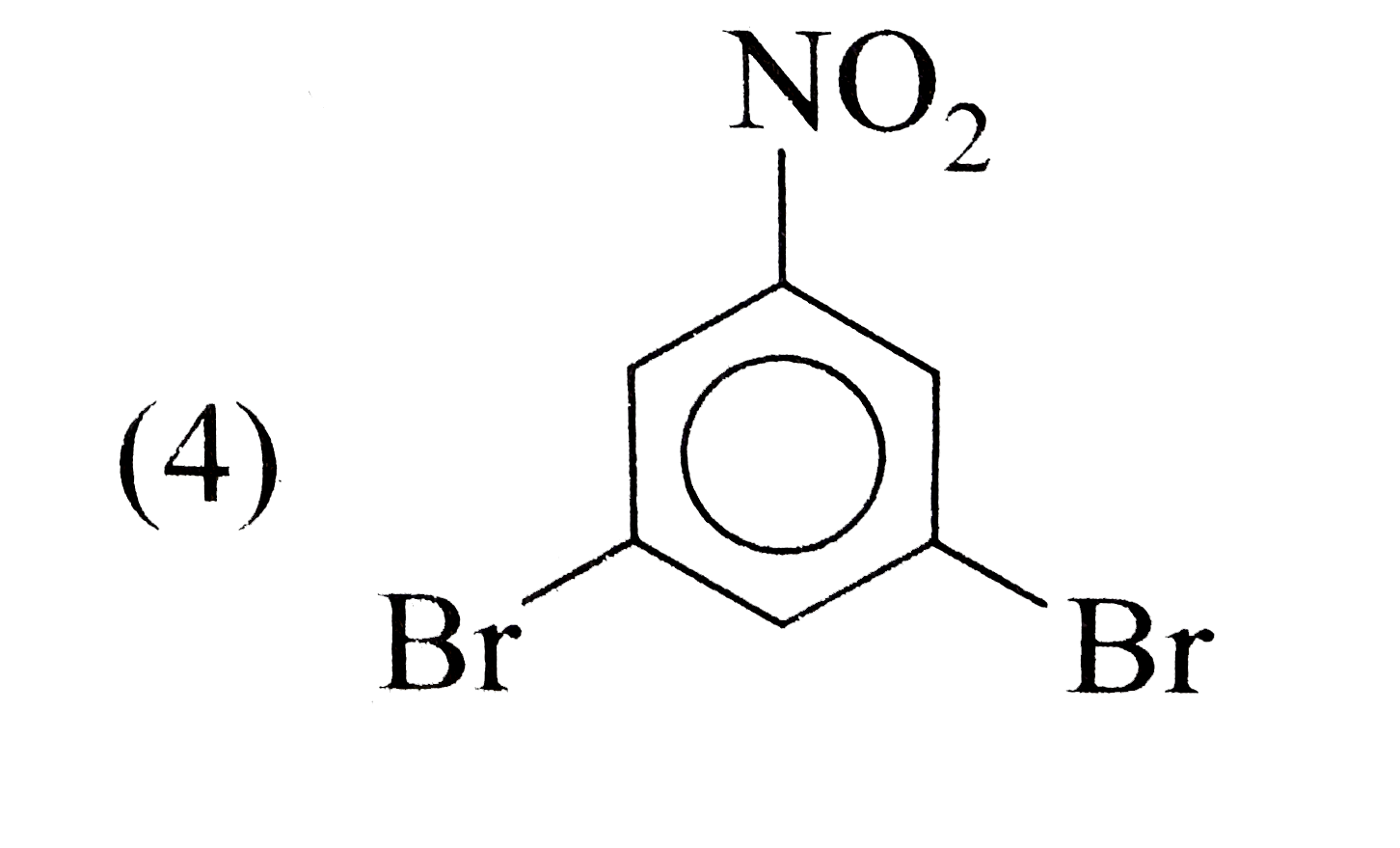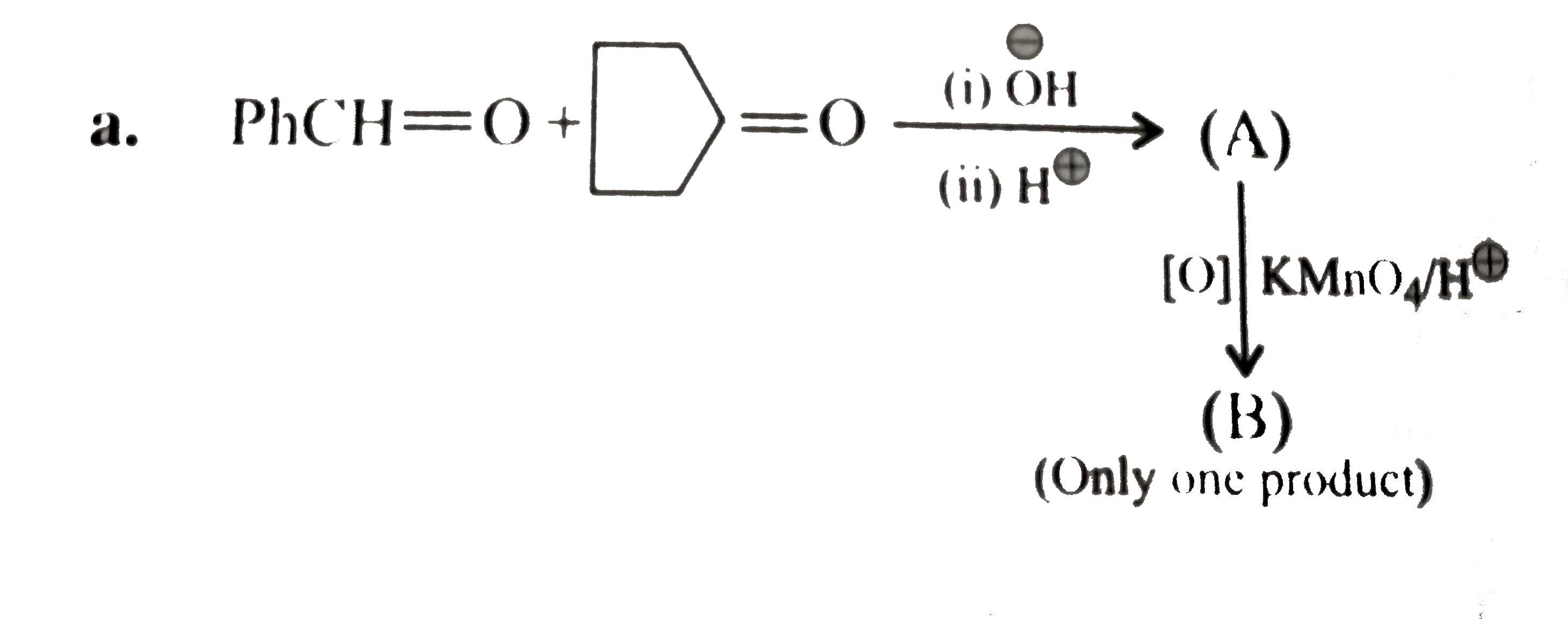Identify the products (A) and (B) in the reactions.
RX+AgCN→(A)––––+AgX
RX+KCN→(B)––––+KX
(A)-RCN, (B)- RCN
(A)-RCN, (B)-RNC
(A)-RNC, (B)-RCN
(A)-RNC, (B)-RNC
The correct Answer is:C
To identify the products (A) and (B) in the given reactions, we need to analyze the reactions step by step.
Step 1: Analyze the first reaction
The first reaction is:
RX+AgCN→A+AgX
- Here, RX represents a haloalkane where R is an alkyl group and X is a halogen (like Cl, Br, or I).
- AgCN (silver cyanide) is a covalent compound. In this reaction, the cyanide ion (CN⁻) will react with the haloalkane.
- Due to the nature of AgCN being covalent, the nitrogen atom in the cyanide ion is more available for bonding.
Product A:
- The reaction leads to the formation of isocyanide (or carbylamine), which has the structure R-N≡C. Thus, product A is:
A=RNC
Step 2: Analyze the second reaction
The second reaction is:
RX+KCN→B+KX
- Here, KCN (potassium cyanide) is an ionic compound. In this case, the cyanide ion (CN⁻) will also react with the haloalkane.
- Since KCN is ionic, the carbon atom in the cyanide ion is more likely to participate in the nucleophilic attack on the haloalkane.
Product B:
- The reaction leads to the formation of cyanide (nitrile), which has the structure R-C≡N. Thus, product B is:
B=RCN
Final Products
- Therefore, the products of the reactions are:
- Product A: RNC (isocyanide)
- Product B: RCN (nitrile)
Summary of Products:
- A = RNC (isocyanide)
- B = RCN (nitrile)
---
The first reaction is:
RX+AgCN→A+AgX
- AgCN (silver cyanide) is a covalent compound. In this reaction, the cyanide ion (CN⁻) will react with the haloalkane.
- Due to the nature of AgCN being covalent, the nitrogen atom in the cyanide ion is more available for bonding.
- The reaction leads to the formation of isocyanide (or carbylamine), which has the structure R-N≡C. Thus, product A is:
A=RNC
The second reaction is:
RX+KCN→B+KX
- Since KCN is ionic, the carbon atom in the cyanide ion is more likely to participate in the nucleophilic attack on the haloalkane.
- The reaction leads to the formation of cyanide (nitrile), which has the structure R-C≡N. Thus, product B is:
B=RCN
- Therefore, the products of the reactions are:
- Product A: RNC (isocyanide)
- Product B: RCN (nitrile)
- A = RNC (isocyanide)
- B = RCN (nitrile)
Topper's Solved these Questions
- HALOALKANES AND HALOARENESBook:NCERT FINGERTIPSChapter:HALOALKANES AND HALOARENESExercise:Polyhalogen Compounds
Explore 6 Videos
- HALOALKANES AND HALOARENESBook:NCERT FINGERTIPSChapter:HALOALKANES AND HALOARENESExercise:Higher Order Thinking Skills
Explore 8 Videos
- HALOALKANES AND HALOARENESBook:NCERT FINGERTIPSChapter:HALOALKANES AND HALOARENESExercise:Physical Properties
Explore 7 Videos
- GENERAL PRINCIPLES AND PROCESSES OF ISOLATION OF ELEMENTSBook:NCERT FINGERTIPSChapter:GENERAL PRINCIPLES AND PROCESSES OF ISOLATION OF ELEMENTSExercise:Assertion And Reason
Explore 15 Videos
- POLYMERS Book:NCERT FINGERTIPSChapter:POLYMERS Exercise:Assertion And Reason
Explore 15 Videos
Similar Questions
Knowledge Check
Identify the product (B)
 A
A B
B CBoth (A) and (B) formedD
CBoth (A) and (B) formedD

Identify the product B:A B
B C
C D
D
Identify the products (A) and (B) in the reactions.
RX+AgCN→(A)––––+AgX
RX+KCN→(B)––––+KXA(A)-RCN, (B)- RCNB(A)-RCN, (B)-RNCC(A)-RNC, (B)-RCND(A)-RNC, (B)-RNC
Identify products A and B in the following reaction

View SolutionIdentify the products (A) and (B) in the reactions.
RX+AgCN→(A)––––+AgX
RX+KCN→(A)––––+KX
View SolutionIdentify products A and B

View Solution Identify the major product (B).
Identify the major product (B).
View SolutionIdentify the final product (B) in the following reaction.

View Solution





